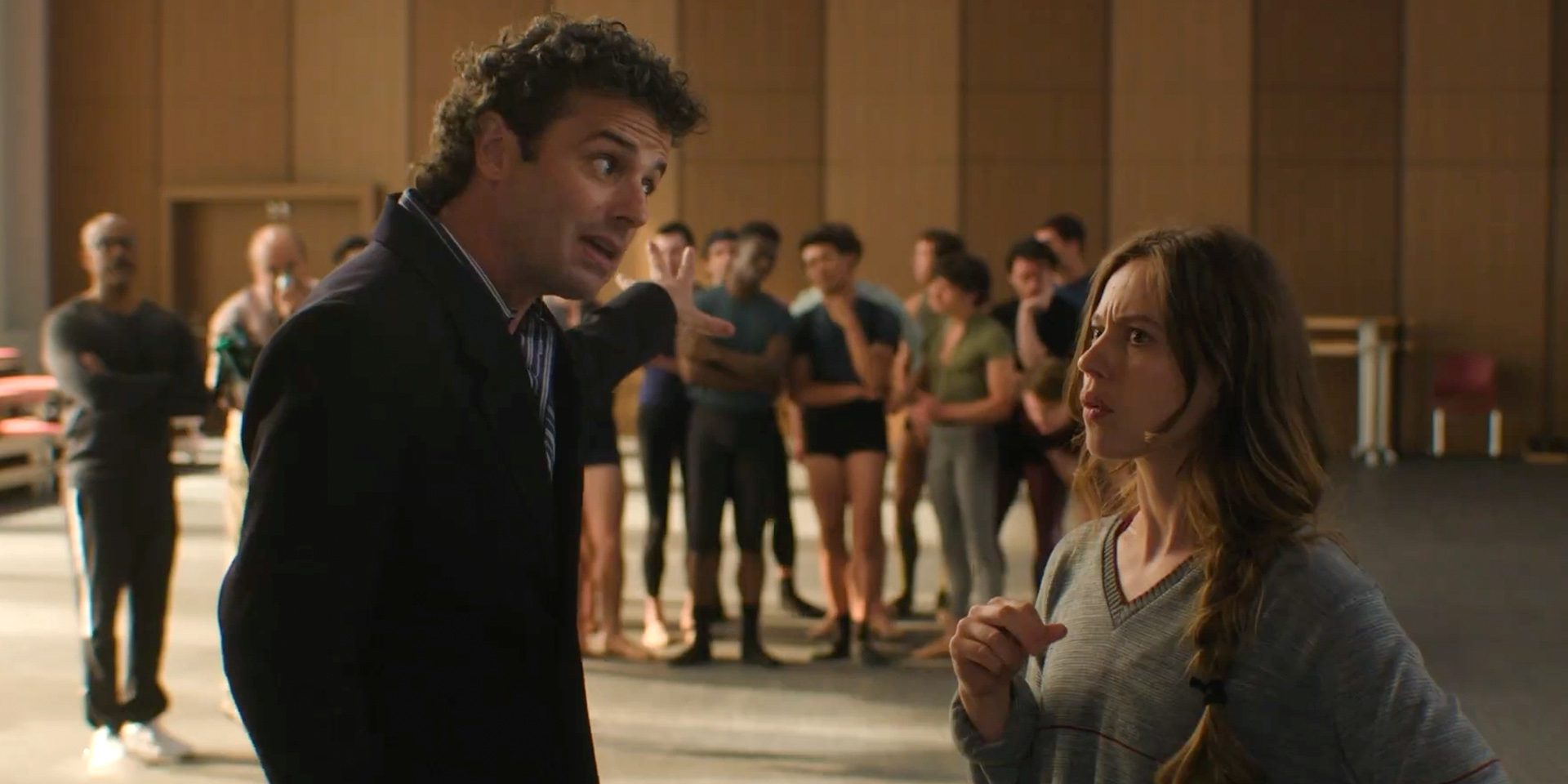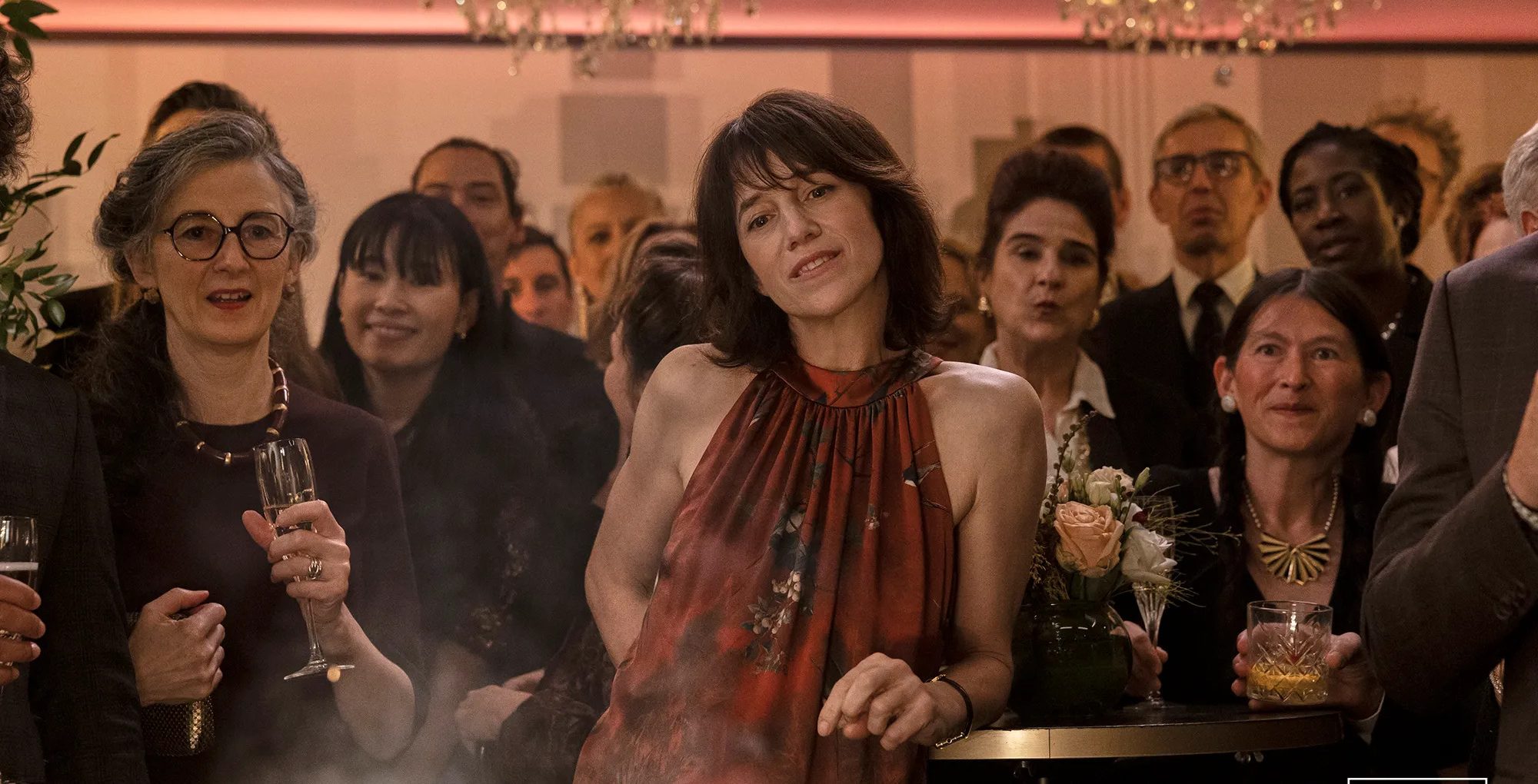Created by Amy Sherman-Palladino and Daniel Palladino, Prime Video’s ‘Étoile‘ tells the story of two world-renowned ballet companies in New York and France facing turmoil with receding ticket sales and crumbling finances. Hoping to revitalize their businesses, their presidents – Jack McMillan and Geneviève Lavigne – decide to swap their best talents, capitalizing on new dance routines and up-to-date practices. However, things get interesting when they start fighting over the destiny of the world’s best ballerina, Cheyenne Touissant, who grabs eyeballs wherever she goes. The comedy-drama series dives into the day-to-day complications within the dance world, capturing the whimsical and eccentric nature of dancers and artistic staff in their natural environment.
Étoile is Rooted in the Realities of the Ballet Industry
Although goofy and brimming with shenanigans, ‘Étoile’ is an attempt by scriptwriters Amy Sherman-Palladino, Daniel Palladino, Anne Cissé, Gideon Glick, Daisy Long, Jen Kirkman, Isaac Oliver, and Thomas Ward to bring to life the world of ballet dancing in an authentic fashion. The show is mined from the experiences of Sherman-Palladino, who grew up as a dancer and even considered pursuing it professionally at one point. She and her creative team wanted to paint a comprehensive and realistic picture of the world dancers inhabit and how it is full of drama, conflict, and moments of amusement. To that end, they also took partial inspiration from many Frederick Wiseman documentaries, such as ‘La Danse: The Paris Opera Ballet,’ centered on “the tough world behind this very delicate art form.”

“There wasn’t that wide-range representation of what the dance world is. And it’s a very weird world. There’s a lot of comedy in it,” Sherman-Palladino explained. She and her co-creator husband hoped to make the normally inaccessible world of dancing more appealing to everyone. Comedy was a key factor in achieving those goals because it helped lighten the mood and showcase the fun aspects of an otherwise rigorous world that is bound by tradition, culture, and history. Sherman-Palladino also stated that the show tries to authentically represent the experiences of real-life dancers and their daily struggles, hoping that they feel seen in their work. Thus, it was important for the writers to avoid any tropes frequently associated with dance-based stories. This also meant steering clear of overwrought material and overdramatization.
In many cases, real dancers were employed by the production team to bring to life the dancing scenes. The dancers scattered within the halls of the two ballet companies are, more often than not, real-life ballet dancers. They were even provided speaking roles, making them integral characters within the series and part of the company’s inner group and dynamics. “This is a show about dancers, so every dancer who’s walking down a hallway or sitting on a bench, those are professionals,” Sherman-Palladino said. Intriguingly, the show also veers away from using musical scores or background tunes in scenes without dancing, showcasing a preference for subtlety and realism. It contributes to an overall sense of immersion and a story where the emotions are always gleaned rather than handed out.
Étoile Captures the Cultural Divide Between Two Countries
One of the most ambitious elements of ‘Étoile’ is its bilingual script that jumps back and forth between English and French throughout. While half of the show is set in New York City, New York, the other half takes place in the boroughs of Paris, France. As such, we are shown the nuances and distinctions between people on either side of the ocean and how culture influences art, perspective, and friendships. Additionally, it also shows how ballet dancing is appreciated differently in other parts of the world. “Paris Ballet is one of the oldest ballet companies. It goes back to the courts of the kings. American Ballet is more of the young upstart, if you will. Ballet is much more of a tradition in Europe. In America, not so much,” Sherman-Palladino stated.

As the narrative progresses, the cultural gap becomes more prominent as business interferes with personal dynamics. On either side, there is a sense of professional jealousy over the talent exchange idea. The French Ballet is unenthused about their new recruits, while the opposite is true for the Americans. It highlights how competition and a healthy divide can often drive an industry forward, even if it leaves behind a feeling of being hard done by. While the bad blood festers, we also witness people coming together and looking beyond their superficial differences to work as a team and overcome the obstacles in front of them. After all, both ballet companies face the same problems, especially with COVID-19 burning a hole through their finances, requiring them to collaborate to find a way out of a difficult phase.
Jack McMillan and Geneviève Lavigne are Fictional Ballet Company Heads
While ‘Étoile’ largely centers on the exploits of talented dancers, the two central characters at the heart of the story have no distinguishable artistic skill of their own. As the heads of their respective ballet companies, Jack McMillan and Geneviève Lavigne are stuck with the monumental duty of managing an organization that is rife with odd employees. They are fictional characters created by the show’s writers, serving the primary function of a looking glass for the audience. Luke Kirby, who plays McMillan, explained that the two characters are mainly focused on hunting down new talent and constantly striving for greatness, even if they can never achieve it onstage. They are both obsessed with Ballet and are “willing to do anything to try and keep it alive and thriving.”

Kirby opined that both Jack and Geneviève harbor feelings of jealousy towards those who are more artistically talented than they are. The show actually portrays Jack being envious of an individual for their innate talent, partly proving Kirby’s point. However, Charlotte Gainsbourg, who plays Geneviève, stated that her character was more driven by the fleeting nature of a dancer’s shelf life rather than feelings of envy. In an interview, the actress said, “I don’t think she [Geneviève] sees herself incapable of the genius. She sees it in other people, but I don’t think there’s the frustration of not being a real artist. I wanted my character to be an ex-dancer, to have the sadness of aging. [Ballet] is for the young.” Thus, they are both driven by similar yet different ideals, making them an interesting access point for the story, albeit fictional in conception.
Read More: Where is Etoile Filmed? Shooting Locations of the Prime Video Show


